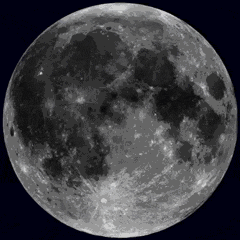@tomhill
Nah, tidal forces are always present no matter the environment we find ourselves in, the trouble is we tend to assume these forces have the same effect on tides of the sea and water in plants. This is where we tend to get it all wrong. The mechanism for the existence of tides is not so simple, for example there are tides only because the seas are all around the planet and connected while there is no tidal effect for waters in lakes. And these lakes still hold massive amounts of water and still no wiggling or bouncing of the surface except for winds doing their part and making waves.
I never did the calculations but have the feeling that a grower's presence near the plants amount for more gravitational disturbance compared to the massive moon in the sky, remember you heard it here first The bigger the grower the bigger the tide
The bigger the grower the bigger the tide 
Another thing, as you know there should be controled groups of plants or seeds in specific environments(designed experiments) to find out the real effect(or lack of it) of gravity changes on sprouting and general growth.
Regarding moonlight, that seems to be an obvious effect because there's light at night time involved, so the difference is much bigger to that of gravity differences and we know some sensitive photoperiod plants can behave differently with just minimum light disturbances.
Anyway, it could be a long debate but without proper research it would remain an unsolved topic as it still is.
My point is very simple. If you have an agricultural calendar(based on Maria Thun) and go see the detailed timelines which promote seed sprouting, greens growth, fruit development etc, you can easily see how silly it looks as it never takes the n account the most important factors such as temperatures of air and soil, soil type, latitude, cloud cover, humidity and so on... it's obvious it's all a tradition with no scientific basis, to me it looks like a cult or religion and i mean no offense to anyone.
I hope my post clarifies at least a bit what is the issue with these types of routines and methods you mentioned.
Cheers
Nah, tidal forces are always present no matter the environment we find ourselves in, the trouble is we tend to assume these forces have the same effect on tides of the sea and water in plants. This is where we tend to get it all wrong. The mechanism for the existence of tides is not so simple, for example there are tides only because the seas are all around the planet and connected while there is no tidal effect for waters in lakes. And these lakes still hold massive amounts of water and still no wiggling or bouncing of the surface except for winds doing their part and making waves.
I never did the calculations but have the feeling that a grower's presence near the plants amount for more gravitational disturbance compared to the massive moon in the sky, remember you heard it here first
Another thing, as you know there should be controled groups of plants or seeds in specific environments(designed experiments) to find out the real effect(or lack of it) of gravity changes on sprouting and general growth.
Regarding moonlight, that seems to be an obvious effect because there's light at night time involved, so the difference is much bigger to that of gravity differences and we know some sensitive photoperiod plants can behave differently with just minimum light disturbances.
Anyway, it could be a long debate but without proper research it would remain an unsolved topic as it still is.
My point is very simple. If you have an agricultural calendar(based on Maria Thun) and go see the detailed timelines which promote seed sprouting, greens growth, fruit development etc, you can easily see how silly it looks as it never takes the n account the most important factors such as temperatures of air and soil, soil type, latitude, cloud cover, humidity and so on... it's obvious it's all a tradition with no scientific basis, to me it looks like a cult or religion and i mean no offense to anyone.
I hope my post clarifies at least a bit what is the issue with these types of routines and methods you mentioned.
Cheers





